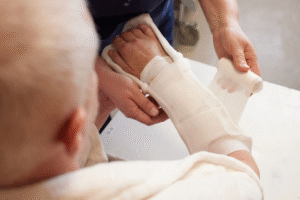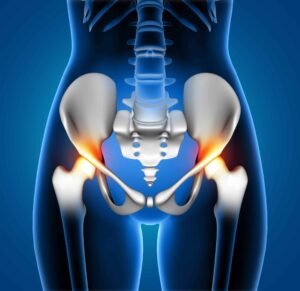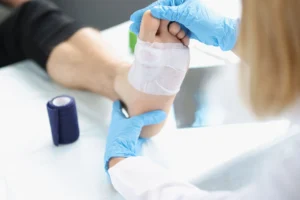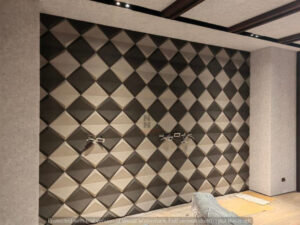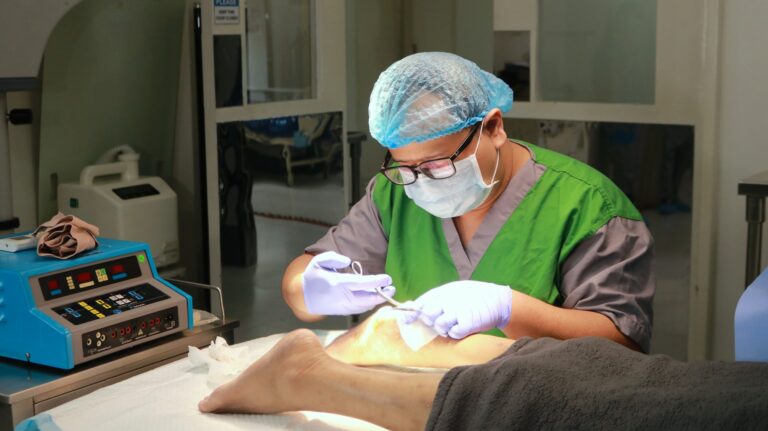Bed sores, medically known as pressure ulcers, are a painful and serious condition that can significantly affect the quality of life for patients who are immobile or bedridden. These wounds develop due to prolonged pressure on the skin, often over bony areas, causing damage to the skin and underlying tissues. Effective bed sore treatment is essential to restore comfort, dignity, and mobility to those affected and prevent severe complications.
At Kalingap Wound Care Clinic in Quezon City, dedicated experts specialize in providing personalized pressure ulcer care designed to meet the needs of each patient. Rooted deeply in Filipino community values, the clinic’s mission is to make compassionate, affordable, and accessible bed sore treatment available to patients throughout Metro Manila and beyond.
What Are Bed Sores?
Bed sores occur when continuous pressure cuts off blood flow to the skin and underlying tissues, leading to tissue damage and ulceration. These wounds commonly develop on areas such as the heels, hips, tailbone, and elbows—places where bones are close to the skin and where pressure is most intense.
Several factors increase the risk of developing bed sores. Immobility, whether due to illness, injury, or advanced age, is the primary cause. Patients confined to beds or wheelchairs who cannot change positions frequently are at the highest risk. Other contributors include poor nutrition, dehydration, incontinence, and existing medical conditions that impair blood circulation.
Pressure ulcers are classified into four stages based on severity:
- Stage 1: Skin is red and irritated but intact. The area may feel warm or painful.
- Stage 2: Partial thickness loss of skin involving the epidermis and sometimes the dermis, resembling a blister or shallow crater.
- Stage 3: Full thickness skin loss with damage extending into the fatty tissue beneath the skin.
- Stage 4: The most severe stage, where the ulcer extends into muscle, bone, or supporting structures, often accompanied by infection.
Understanding these stages is vital for determining the appropriate bed sore treatment.
Why Bed Sore Treatment is Critical
Pressure ulcers are not merely uncomfortable—they can lead to serious health complications if left untreated. The continuous breakdown of skin can result in deep wounds prone to infection, including cellulitis, osteomyelitis (bone infection), and sepsis, which can be life-threatening.
Effective bed sore treatment restores patient comfort by reducing pain and inflammation. It also plays a crucial role in preserving dignity, as patients often feel vulnerable due to their immobility and the visible wounds. Restoring mobility is another critical goal because pressure ulcers themselves can limit movement, causing a cycle of worsening skin damage.
Early and proper treatment can shorten healing time and reduce the risk of recurrence. It also minimizes the emotional and financial burden on patients and their families.
Bed Sore Treatment Options
Successful management of pressure ulcers requires a multi-faceted approach tailored to the wound’s severity and the patient’s overall health.
Pressure Relief: The foundation of bed sore treatment is relieving pressure on affected areas. This can be achieved through frequent repositioning—usually every two hours—to redistribute weight and reduce continuous pressure. Special mattresses, cushions, and pads designed to reduce friction and shear forces also aid in pressure relief.
Wound Cleaning and Dressing: Cleaning the wound properly prevents infection and promotes healing. Healthcare professionals use gentle cleansing agents to remove dead tissue and bacteria. Dressings are selected based on the ulcer’s stage and condition; options include hydrocolloid, foam, alginate, and antimicrobial dressings. These protect the wound, maintain a moist healing environment, and absorb exudate.
Infection Control: Infections can complicate bed sores and delay healing. When infection is present, treatment includes antibiotics, either topical or systemic, depending on severity. In advanced cases, surgical intervention may be necessary to remove infected tissue.
Nutritional Support: Good nutrition is a key component of healing pressure ulcers. Adequate protein, vitamins (especially vitamin C and zinc), and hydration help rebuild skin and tissue. Dietitians often work with patients to develop nutrition plans that support wound recovery.
Advanced Wound Care Therapies: In more severe cases, advanced therapies like debridement (removal of dead tissue), negative pressure wound therapy (vacuum-assisted closure), and bioengineered skin substitutes may be used to accelerate healing.
Kalingap Wound Care Clinic’s Approach to Bed Sore Treatment
At Kalingap Wound Care Clinic, treatment goes beyond simply managing wounds—it’s about restoring life quality. As a Filipino-led clinic in Quezon City, their care philosophy revolves around community values of compassion and respect. They understand the emotional and physical toll bed sores take on patients and their families.
The clinic offers affordable and accessible bed sore treatment across Metro Manila and surrounding areas, ensuring that expert wound care is available to those who need it most. Their team provides personalized treatment plans that consider each patient’s unique condition and lifestyle. The goal is always to restore comfort, dignity, and mobility through comprehensive care.
Patients benefit from a holistic approach that includes thorough assessment, advanced wound management, patient and caregiver education, and continuous support during recovery.
Tips for Preventing Bed Sores
Prevention is always better than treatment when it comes to bed sores. For caregivers and patients, these practical tips can help reduce risk:
- Regular Repositioning: Changing positions every two hours reduces pressure on vulnerable areas.
- Skin Care: Keep skin clean and dry; moisturize to prevent dryness and cracking.
- Nutrition and Hydration: Ensure a balanced diet rich in proteins, vitamins, and fluids.
- Use Pressure-Relieving Devices: Specialized mattresses, cushions, and pads can help distribute pressure evenly.
- Monitor Skin Closely: Early detection of redness or irritation can prevent progression to ulcers.
When to Seek Professional Help
Not all bed sores can be managed at home. Signs that professional intervention is necessary include:
- Wounds that do not improve or worsen despite basic care
- Presence of pus, foul odor, or excessive redness indicating infection
- Increasing pain, swelling, or fever
- Bed sores reaching stage 3 or 4
Early consultation with wound care specialists like those at Kalingap Wound Care Clinic ensures prompt and effective treatment, reducing risks and accelerating healing.
Takeaway
Bed sore treatment is a vital part of caring for immobile or vulnerable patients. Timely and expert care not only heals wounds but also restores comfort, dignity, and the ability to move freely. Kalingap Wound Care Clinic’s commitment to compassionate, affordable, and accessible pressure ulcer care makes them a trusted partner in the journey toward recovery.
If you or a loved one is struggling with bed sores, don’t delay seeking professional help. Reach out to Kalingap Wound Care Clinic in Quezon City for expert guidance and effective treatment tailored to your needs.



